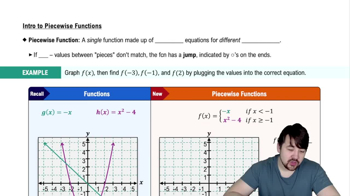Area functions for linear functions Consider the following functions ƒ and real numbers a (see figure).
(a) Find and graph the area function A (𝓍) = ∫ₐˣ ƒ(t) dt .
<IMAGE>
ƒ(t) = 4t + 2 , a = 0

 Verified step by step guidance
Verified step by step guidance Verified video answer for a similar problem:
Verified video answer for a similar problem:



 6:11m
6:11mMaster Fundamental Theorem of Calculus Part 1 with a bite sized video explanation from Patrick
Start learning